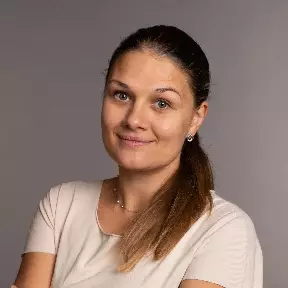Dive in the algorithms from the clinical practise!
Tension pneumothorax
Michal Vondráček, Jakub Švec, Svatava Janků
The young athlete Michal was with his friend riding freeride bikes. Michal overestimated his forces and had an accident in which he caused a tension pneumothorax. In this algorithm we will learn how to proceed in such a situation. In the first part we will give first aid in the role of Michal's friend. Then we put ourselfs into position of the EMS physician and show how this situation needs to be solved before the patient is taken to the hospital. Finally, as emergency doctors, we will continue to treat pneumothorax.
ATLS – Advanced Trauma Life Support
Zbyněk Šimek, Daniel Barvík, Tereza Kramplová
Trauma accounts for 10 per cent of the world's mortality, about 5 million victims each year. And this trend is expected to increase. Conversely, good organization of care for the injured can reduce this trend, especially in the acute phase. Since 1978, the American College of Surgeons has been trying to systematize and improve this component of care by the Advanced Trauma Life Support protocol. The interactive algorithm approaches the use of the ATLS protocol in pre-hospital care and emergency room to transport to the operating room. It describes the basic scheme of examination, securing and therapy of traumatized patients.
Malignant hypertermia - 2020
Martina Klincová, Dagmar Štěpánková, Petra Kostroňová, Pavlína Kotrhová
Malignant hyperthermia is a rare, life-threatening disease that is characterized by pathological hypermetabolic state in skeletal muscle that is triggered by specific anaesthetic agents. Firstly, our educational algorithm will lead you step by step through a situation with unexpected case of MH during surgery, show you how to remain calm, assess the situation and save the patient's life. The second part of the algorithm is dedicated to anaesthetic care of a patient who is suspected to have genetic predisposition for developing MH. It is crucial to prepare your workplace and medical staff for the specifics of anaesthesiological management of these patients and the possibility of further complications. Last but not least, you will learn about means of diagnostic methodes of MH.
Hypothermia and Frostbites
Jan Filip Sýkora, Šárka Raková, Martina Valachová
It is very probable that everyone has encountered a mild case of hypothermia at some point in their life. Nevertheless, severe hypothermia is a life threatening condition that can lead to cardiac arrest, metabolic decompensation and multiorgan failure. Therefore, it is necessary to treat it adequately. This algorithm will guide you through the process of treating a hypothermic person, which begins by the first aid in the field, continues by the care of EMS members and doctors in the emergency department and is later completed by the treatment of frostbites
Acute respiratory failure in adult
Jozef Klučka, Lucienne Michnáčová
Respiratory failure is a life-threatening condition in which respiratory system is unable to ensure adequate gas exchange which results in hypercapnia (insufficient elimination of carbon dioxide from the blood), hypoxaemia (insufficient oxygen supply to arterial blood) or both. In acute respiratory failure compensatory mechanisms occur − hyperventilation, tachypnoea and tachycardia. The algorithm presents possibilities of oxygen therapy and ventilatory support in a patient with severe respiratory failure. Regarding patient's clinical condition (vital signs, laboratory, physical examination) you will be able to recognize the (in)effectiveness of therapy and understand ventilation parameters such as PEEP, FiO2 and oxygen flow. Knowledge of individual methods, their limitations and settings is crucial for correct indication in a given patient.





